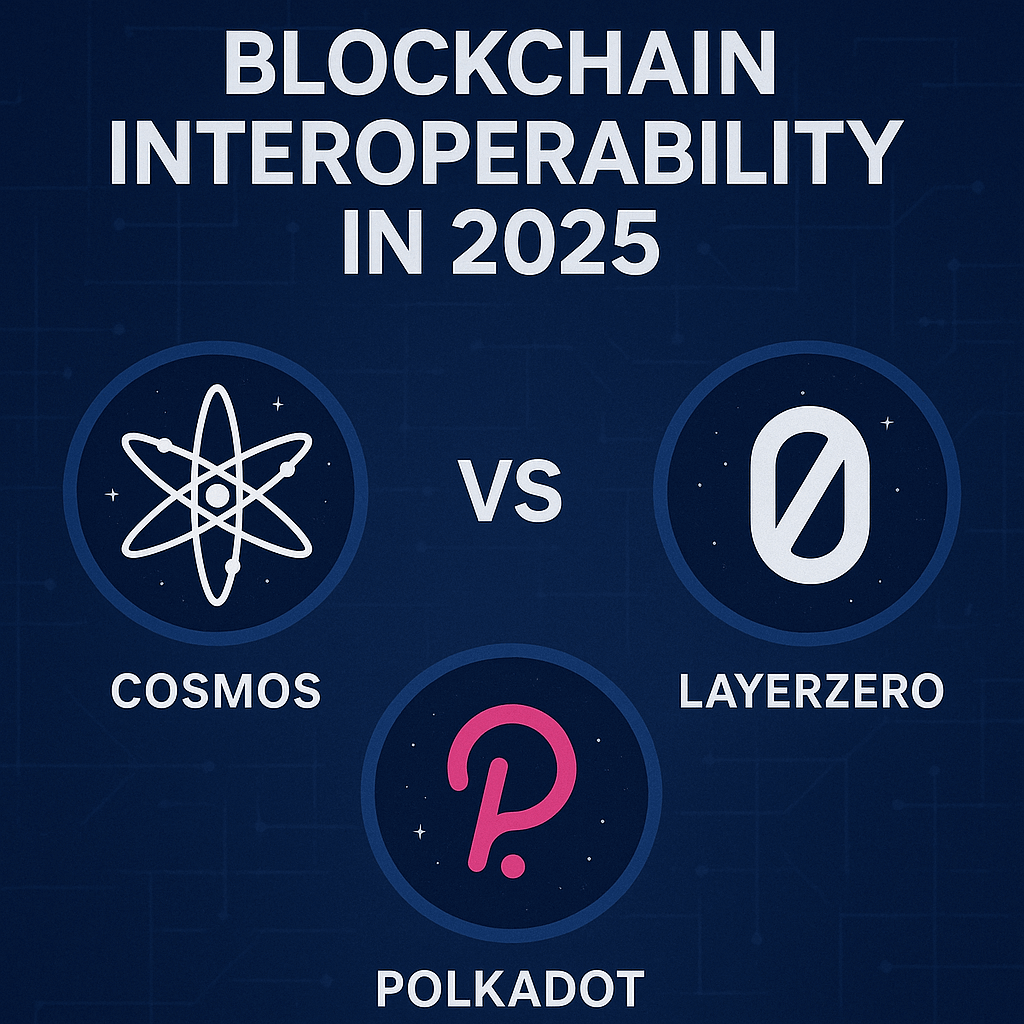Blockchain Interoperability in 2025: Cosmos vs Polkadot vs LayerZero
As the blockchain space matures in 2025, interoperability has become a cornerstone of Web3 innovation. The rise of multichain ecosystems demands seamless communication between networks — and platforms like Cosmos, Polkadot, and LayerZero are leading the charge. But how do these technologies compare, and what does the future hold for a connected blockchain world?
Let’s dive into the architectures, advantages, and future potential of these top cross-chain platforms.
Why Interoperability Matters in 2025
In a fragmented blockchain world, users are constantly moving assets and data across chains — from Ethereum and BNB Chain to Solana and Avalanche. Without true interoperability, this experience is riddled with inefficiencies, security risks, and high costs.
Interoperability enables:
- Seamless asset transfers between chains
- Cross-chain dApps with improved UX
- Better scalability and shared liquidity
- Enhanced developer flexibility
With DeFi, NFTs, and gaming going multichain, the race is on to build a truly connected blockchain ecosystem.
Cosmos: The Internet of Blockchains
Cosmos uses the Inter-Blockchain Communication (IBC) protocol to connect independent blockchains. Each chain (called a Zone) is connected to the Cosmos Hub, enabling trustless communication.
Key Features:
- Modular SDK for custom blockchain development
- IBC for secure data/asset transfer
- Tendermint consensus for speed and finality
Strengths:
- Proven interoperability with dozens of live IBC chains
- Strong developer ecosystem (Osmosis, Cronos, dYdX)
- High throughput and low fees
Challenges:
- Security model is chain-specific (each zone has its own validator set)
- Cosmos Hub’s role in economic security is still evolving
Polkadot: A Heterogeneous Multi-Chain Framework
Polkadot takes a different approach by creating a shared security model where parachains plug into the central Relay Chain. This enables tight coupling between chains and streamlined governance.
Key Features:
- Shared security and consensus via Relay Chain
- Parachains for specialized use cases
- Cross-chain message passing (XCMP)
Strengths:
- Strong interoperability within the Polkadot ecosystem
- Economic security for all parachains
- Native support for complex cross-chain logic
Challenges:
- Parachain slots are limited and expensive to obtain
- Less flexibility compared to Cosmos SDK chains
- Slower rollout of cross-chain bridges beyond Polkadot/Kusama
LayerZero: A Unified Messaging Layer for All Chains
LayerZero offers an omnichain interoperability protocol, acting as a messaging layer that enables smart contracts on different chains to talk to each other — without the need for an intermediate chain.
Key Features:
- Ultra-light client architecture
- Decentralized Oracle + Relayer model
- Supports EVM and non-EVM chains
Strengths:
- Chain-agnostic and highly flexible
- Rapid adoption in DeFi (Stargate, Radiant)
- Native messaging, not just token bridges
Challenges:
- Security depends on third-party oracles/relayers
- Still evolving standards for complex cross-chain interactions
- Requires careful configuration by developers
The Future of Cross-Chain Interoperability
In 2025 and beyond, the multichain world won’t be about picking one “winner” — it’s about synergy. Cosmos will continue to thrive in IBC-native ecosystems, Polkadot will power tightly coupled parachains, and LayerZero will unlock novel omnichain applications.
We’re entering an era where users won’t need to know which chain they’re on. Wallets, dApps, and protocols will abstract complexity — and interoperability layers will become the invisible glue that powers Web3.
Final Thoughts: Powering the Next Wave of Multichain Innovation
As blockchain technology moves toward a connected, user-friendly multichain world, platforms like Cosmos, Polkadot, and LayerZero will shape the infrastructure for DeFi, NFTs, gaming, and more.
If you’re excited about the future of cross-chain applications, make sure to check out the FlutterBees token presale — a meme-powered project designed for the interoperable future.
Join the FlutterBees Presale Now and be part of the buzz!






Post Comment